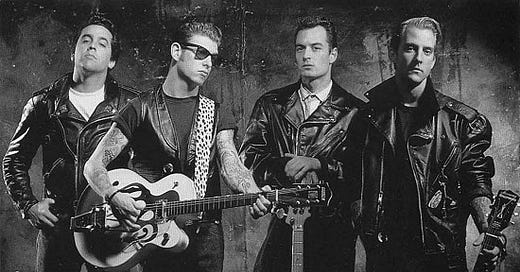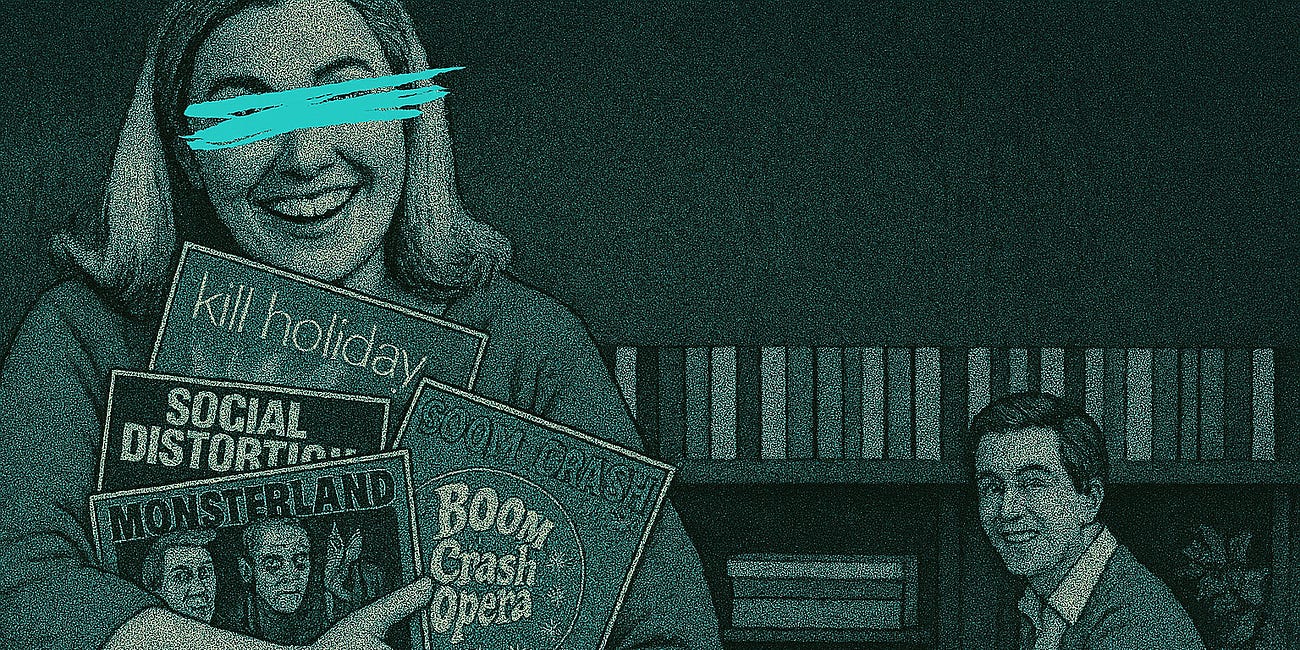Social Distortion | History of the Band
How a Punk Band from Orange County Found Redemption in the 1990s
Social Distortion formed in 1978 in Fullerton, California, right as Southern California's punk scene was finding its footing. The band was created by guitarist and vocalist Mike Ness, along with high school friends Casey Royer (drums), Tom Corvin (vocals), and Rikk Agnew (bass). Their early gigs were frenzied, all volume and velocity, leaning hard into the influence of the Sex Pistols and Ramones.
Then came the inevitable churn. Royer and Agnew peeled off to form the Adolescents, and Corvin didn’t last. Ness, never one to back down, took the mic himself. Dennis Danell, a friend with little musical experience, picked up the guitar and stuck around. That kind of loyalty would matter.
By the time "Mainliner" dropped in 1981, Social Distortion had become a fixture in the Orange County punk movement. Their sound was fast and furious, but the seeds of something else had already been planted. Ness grew up listening to country and early rock, and those influences started seeping in—quietly at first, then with purpose.
Patrick Testa suggested this artist for a future Dig Me Out podcast episode. Each month, our Patrons are presented with a selection of albums suggested by listeners and asked to vote for their favorite.
Even in the early days, you could hear it: this wasn’t just rebellion for its own sake. Ness was building something more personal, more narrative. That instinct would guide them through the next decade.
Musical Style and Evolution
As the 80s wore on and hardcore fractured into subgenres, Social Distortion began forging a sound that was both broader and more intimate. It wasn’t about abandoning punk—it was about deepening it.
The shift began with 1988’s Prison Bound, where tempos slowed and melodies crept in. Ness’s lyrics became less about scenes and more about scars. Stories of addiction, regret, survival—they were all there, told in a voice that sounded like it had lived every word.
In the 1990s, that voice matured. The band's music started to feel like road songs for people who’d taken a few wrong turns but kept going. The punk bones were still there, but wrapped in twang, echo, and reflection. It felt authentic because it was.
Discography and Notable 90s Albums
Social Distortion (1990, Epic Records)
A new label. A tighter sound. Epic Records gave the band a wider reach, and producer Dave Jerden (Jane’s Addiction, Alice in Chains) helped translate their live energy into a studio polish that still left room for grit.
“Ball and Chain” hit with world-weary wisdom. “Story of My Life” became a rite-of-passage anthem. Even the Johnny Cash cover, “Ring of Fire,” landed like a manifesto. This was a punk band that could write songs you’d sing alone in the car.
The album reached No. 128 on the Billboard 200 and later went Gold—not because of hype, but because the songs kept finding people.
Somewhere Between Heaven and Hell (1992, Epic Records)
The swagger is stronger here. Ness sounds more confident, more centered. “Bad Luck” gave them their biggest hit on the Modern Rock Tracks chart, and deeper cuts like “Born to Lose” showed how far their songwriting had come.
The album peaked at No. 76 on Billboard and earned another Gold certification. It wasn’t flashy—it was solid. Reliable. The kind of record that ages well.
White Light, White Heat, White Trash (1996, Epic Records)
This one hits hard. Michael Beinhorn’s production is sharp, but not sterile. The songs are stripped down, emotionally exposed.
“I Was Wrong” might be the most honest track Ness ever wrote. It’s not just an apology—it’s a reckoning. The album debuted at No. 27 on Billboard, giving the band its highest chart position to date and a renewed sense of relevance in a changing punk landscape.
Social Distortion didn’t ride the alt-rock wave or hop onto the ska-punk boom. They stayed in their lane, and critics respected that.
AllMusic called their 1990 album "a bracing return to form" and praised the band's growth. Rolling Stone admired White Light, White Heat, White Trash for its no-nonsense clarity. Reviewers often circled around the same takeaway: Social D knew who they were, and that consistency was rare.
Influence and Legacy
You can draw a straight line from Social Distortion to bands like Lucero, The Gaslight Anthem, and Against Me!—groups who wanted their punk to say something, to feel like something beyond rebellion.
In 1999, Ness released two solo records (Cheating at Solitaire and Under the Influences) that made his musical compass even clearer. Country, soul, vintage rock—all of it lived inside his songwriting.
They never headlined arenas, but they filled rooms, built community, and stayed real. That might be the most punk thing of all.
The 1990s were a proving ground. Social Distortion came out the other side more focused, more respected, and more influential than ever.
They weren’t chasing trends or reinventing themselves every album. They were refining—cutting closer to the bone. In a decade defined by flux, they offered something grounded. Their records from that era still feel like conversations, like letters from someone who’s been through it and made it back.
Time to Vote: Which 90s Album Should We Dig Into Next?
Last month, you picked Thelonious Monster – Beautiful Mess—and we had a blast digging into it on the latest episode of the 90s Rock podcast. A folk-punk underdog with major-label drama, L.A. scene cred, and guest spots from Soul Asylum, Tom Waits, and more—it sparked a deep dive into one of the era’s most chaotic and compelling stories.






